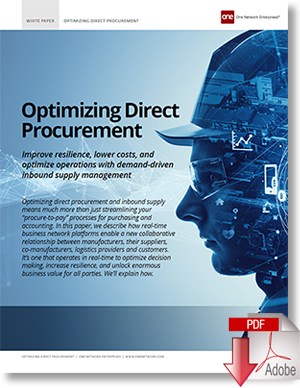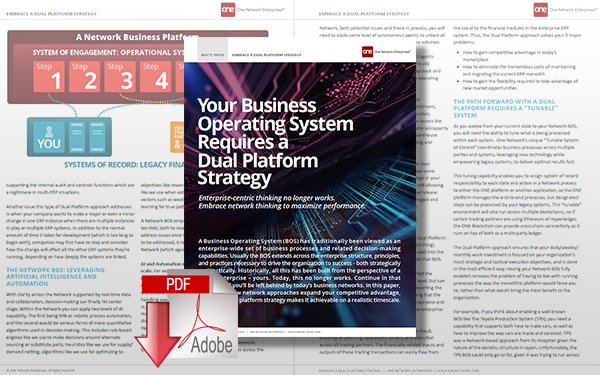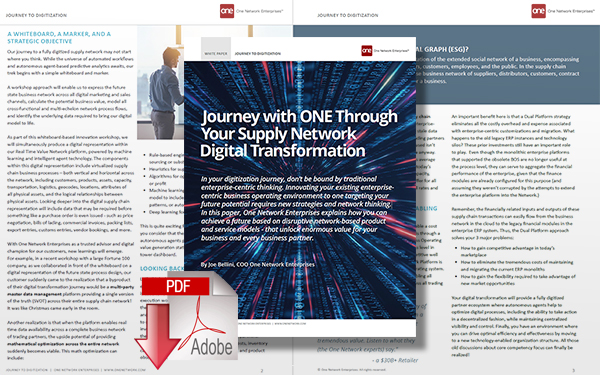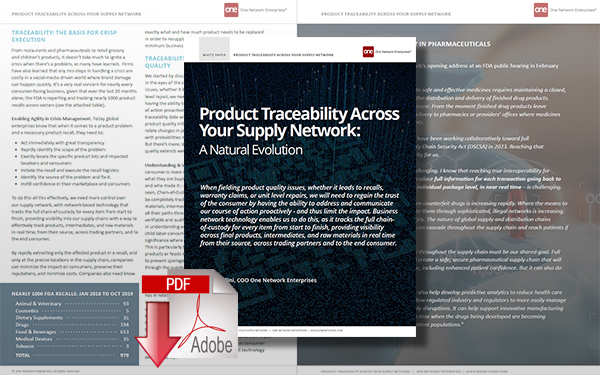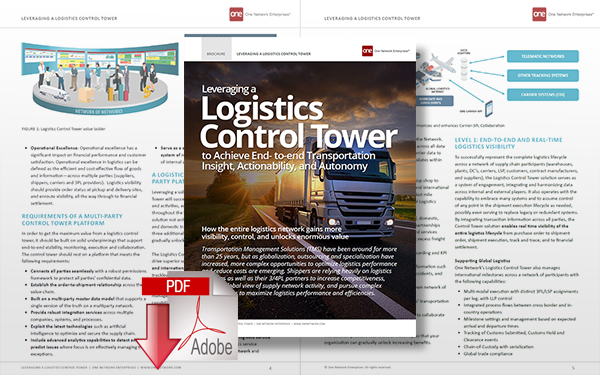Top Challenges and Solutions for Optimizing Procurement & Inbound Supply Processes

How to improve resilience, lower costs, and optimize operations with demand-driven inbound supply management.
Optimizing Direct Procurement
Optimizing direct procurement and inbound supply means much more than just streamlining your “procure-to-pay” processes for purchasing and accounting.
In the paper, “Optimizing Direct Procurement” we describe how real-time business network platforms enable a new collaborative relationship between manufacturers, their suppliers, co-manufacturers, logistics providers, and customers. It’s one that operates in real-time to optimize decision making, increase resilience, and unlock enormous business value for all parties.
The following is an abbreviated version of the paper, “Optimizing Direct Procurement.”
Inbound Supply Challenges
When it comes to direct materials – the products that go into your finished goods - many manufacturers struggle on the one hand with increasing costs due to high inventory levels, and on the other with critical out-of-stock situations that at times result in lost production time, costly plant issues (such as unplanned overtime, production line setups, and teardowns), and high logistics costs. Inventory costs rise when you’re carrying excess inventory in some areas and not enough inventory of the right materials in others. High transportation costs result when expedites are required to cover inventory shortages.
Another problem is long information lead times with suppliers that impact responsiveness. Even when companies send weekly or daily communications to suppliers, communications can lag dramatically the further down the supply chain you go, known as the “bullwhip effect”. Companies need to be agile to get information to all suppliers with close to zero time lags to ensure that replenishment needs are met with desired service levels.
Most importantly in today’s environment, you’ll want to ensure a resilient supply process is in place, one that provides for continuity of supply and minimizes disruptions to operations and your customers. Part of this includes a streamlined and highly efficient process for rapidly on-boarding qualified suppliers worldwide and the ability to quickly ramp your supply network up or down in response to demand or supply shifts, regulatory, geopolitical changes, or natural disasters, such as the recent pandemic.
In a win-win process, your company may be judged on the quality of your order forecast to suppliers, and you’ll need a way to evaluate suppliers and hold them accountable on supplier delivery performance, with a consistent and accurate way to measure and record this performance, which both parties can see.
Finally, let’s acknowledge that for many companies, a key barrier to optimizing inbound supply processes is the state of your own systems. Companies can have dozens – even a hundred or more – separate, siloed enterprise systems or ERP/MRP instances. How can you expect to put in place standards for replenishing components and raw materials, along with consistent processes for your many suppliers, without also addressing the fundamental issues of your IT landscape?
Requirements for World-Class Inbound Supply Chain Management
What does it take to reach world-class performance? As you look to optimize your direct procurement processes, you’ll need to ensure that your platform provides these essential capabilities.
Orchestrate All Inbound Supply: Your business will require a comprehensive platform for managing the flow of raw materials, intermediates, parts, and components from supply to assembly or manufacturing to final assembly and packaging across your business. Your supply platform must also include workflows well beyond basic ordering, including forecasting, planning, collaboration, executing, and delivering material orders. You’ll also need early detection alerts for material and logistics issues, as well as ways to identify, resolve, and automate issue resolution to the greatest extent possible.
Correlate Each Transaction Beginning to End: You’ll need control and visibility over the entire life cycle of each transaction with full insight into cash flow and financial commitments. Procure-to-Pay services will also need to integrate purchasing, logistics, and financial operations into a single environment, so you can track each order from beginning to end, shipment for the order, invoice, etc. Services should include supply management, requisition, sourcing, order management, logistics tracking, invoice management, and data feeds to payables (external payment systems).
Propagate Demand to Upstream Tiers: Can your system effectively propagate demand from finished goods all the way back to the n-level vendor tier in near real-time? The answer will need to be “yes”, precisely computing net requirements based on stock on-hand, on-order, and your replenishment policy to generate accurate order forecasts (i.e. inbound supply requirements). Distributors and vendors will need the ability to view and operate with accurate long-term forecasts so they can plan their capacity and distribution accordingly.
Automatically Reallocate Inbound Materials: You may need to dynamically plan and execute “milk runs” - where consumed materials or parts are replenished on a regular basis - according to real-time data. You’ll be able to reduce the risk of shortages by autonomously matching demand and supply around the clock. As demand across each facility changes, you’ll want intelligent agents to automatically reallocate materials in transit accordingly.
High Precision Matching of Deliveries with Requirements, and Greater Accountability: Most companies have heavily invested in their MRP systems. These create forecasts and firm orders where suppliers ship according to shipping instructions, typically specified on a weekly basis. Suppliers can have leeway to ship any time during the week. So, suppliers can ship to deliver on Monday even though the real need is in the latter part of the week, say Thursday or Friday. The result is that you may have a maximum inventory violation at the beginning of the week! In addition, supplier performance is often loosely measured, where as long as supplier ships in the specified week, they ship on time. Ideally, you would like to instruct suppliers to ship and arrive at the time your factories actually need it, such that supplier performance is measured at the exact required ship date or request date. Suppliers may think their performance is greater than 90% based on loosely-defined delivery dates, while the actual performance could be only at 70% when measured on the exact required ship or delivery date. You’ll require greater precision in your instructions to suppliers, as well as improved tracking mechanisms for greater accountability.
Integrate Transportation Too: You’ll need a highly responsive real-time platform to make sure material supply meets fluctuating demand – while at the same time reducing transportation costs by maximizing container and shipment use, right-sizing the container, consolidating deliveries into a run, and driving out expediting costs. This will require the ability to aggregate demand, source materials, and transportation requirements across the supply chain, offering an integrated view of supply, demand, production capacity, and transportation across both internal manufacturing operations and the operations at suppliers and service providers.
Work with Logistics Providers in Real Time: A world-class inbound supply process will also need a highly capable transportation management capability with end-to-end, real-time visibility for material, and logistics planners. It will need to integrate materials management and logistics for inbound, outbound, international, domestic, and cross-border transportation, offering consolidated views that eliminate the need to manually track shipments via email and phone. Logistics features will need to include global trade document and milestone management, multi-modal and multi-leg shipment visibility, global milestone management, alerting, and third- or fourth-party logistics integration services.
Related: United States Air Force Awards $62M Contract for Its Item Master Logistics Capability Initiative
Related Resources
Your Business Operating System Requires a Dual Platform Strategy
In this paper, we explain how network approaches expand your competitive advantage, and how a dual-platform strategy makes it achievable on a realistic timescale. Download Now!
Journey Through Your Supply Network Digital Transformation
In this paper, One Network Enterprises explains how you can achieve a future based on disruptive network-based product and service models - that unlock enormous value for your business and every business partner. Download Now!
Product Traceability Across Your Supply Network
This report explains how new business network technology enables us to track the full chain of custody for every item from start to finish, providing visibility across final products, intermediates, and raw materials, and it does this in real-time, from their source, across trading partners, and to the end consumer. Download Now!
How to Leverage a Logistics Control Tower
This paper describes how leveraging a logistics control tower can achieve end-to-end transportation insight, actionability, and autonomy and how the entire logistics network gains more visibility, control, and unlocks enormous value. Download Now!
More Resources from One Network Enterprises
Article Topics
One Network Enterprises News & Resources
Blue Yonder announces an agreement to acquire One Network Enterprises for $839 million Blue Yonder Acquires One Network Enterprises for $839M Companies Need to Develop New Innovative Approaches to Supply Chain Design How to Improve Cost of Goods Sold Horizontally Across the Supply Chain How the Global Pandemic Accelerated Supply Chain Visibility, Digitalization, and Automation AI and Data, the Future of Supply Chain Management AI and Supply Chain Problem Solving More One Network EnterprisesLatest in Supply Chain
TIm Cook Says Apple Plans to Increase Investments in Vietnam Amazon Logistics’ Growth Shakes Up Shipping Industry in 2023 Spotlight Startup: Cart.com is Reimagining Logistics Walmart and Swisslog Expand Partnership with New Texas Facility Nissan Channels Tesla With Its Latest Manufacturing Process Taking Stock of Today’s Robotics Market and What the Future Holds U.S. Manufacturing Gains Momentum After Another Strong Month More Supply Chain

